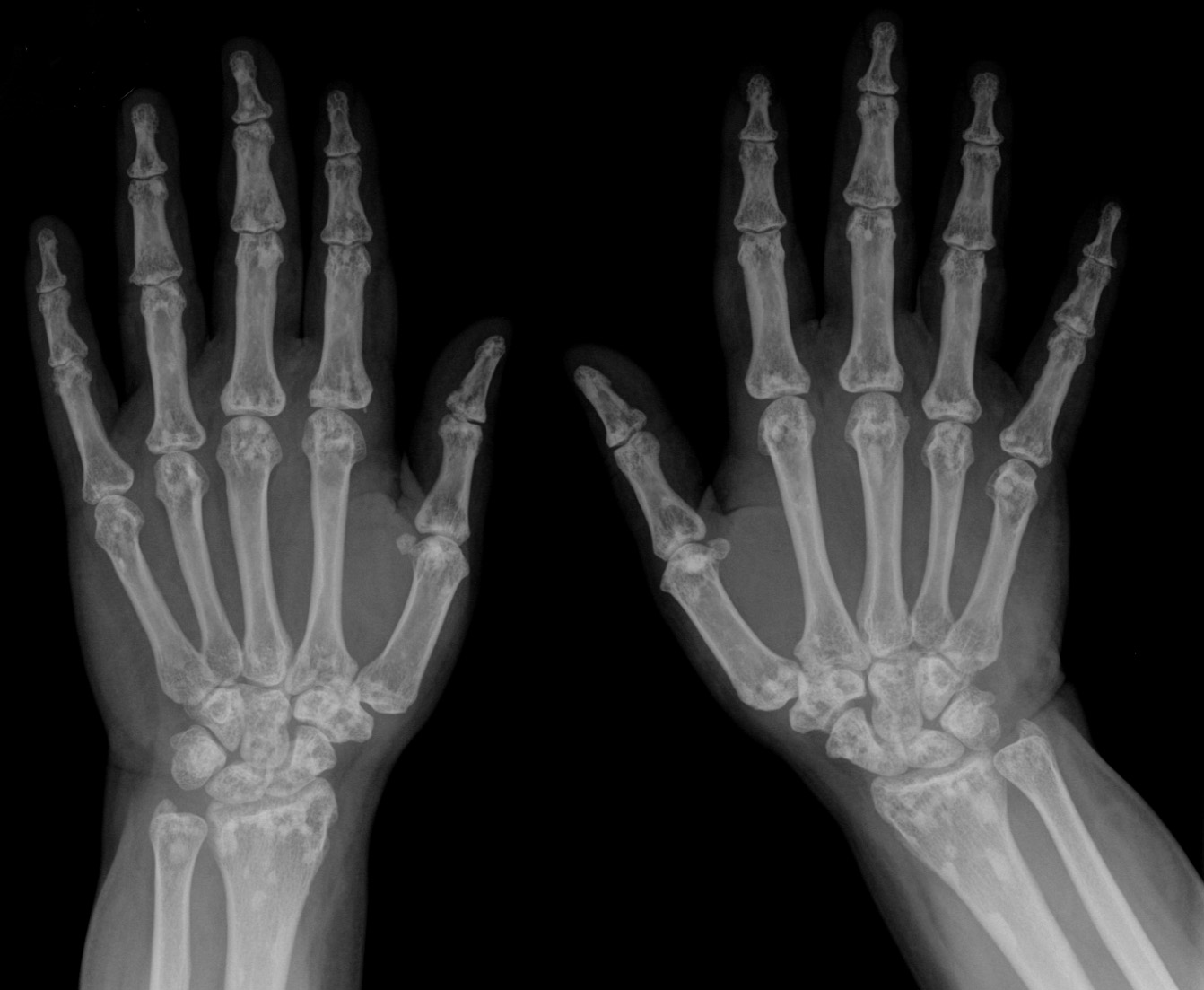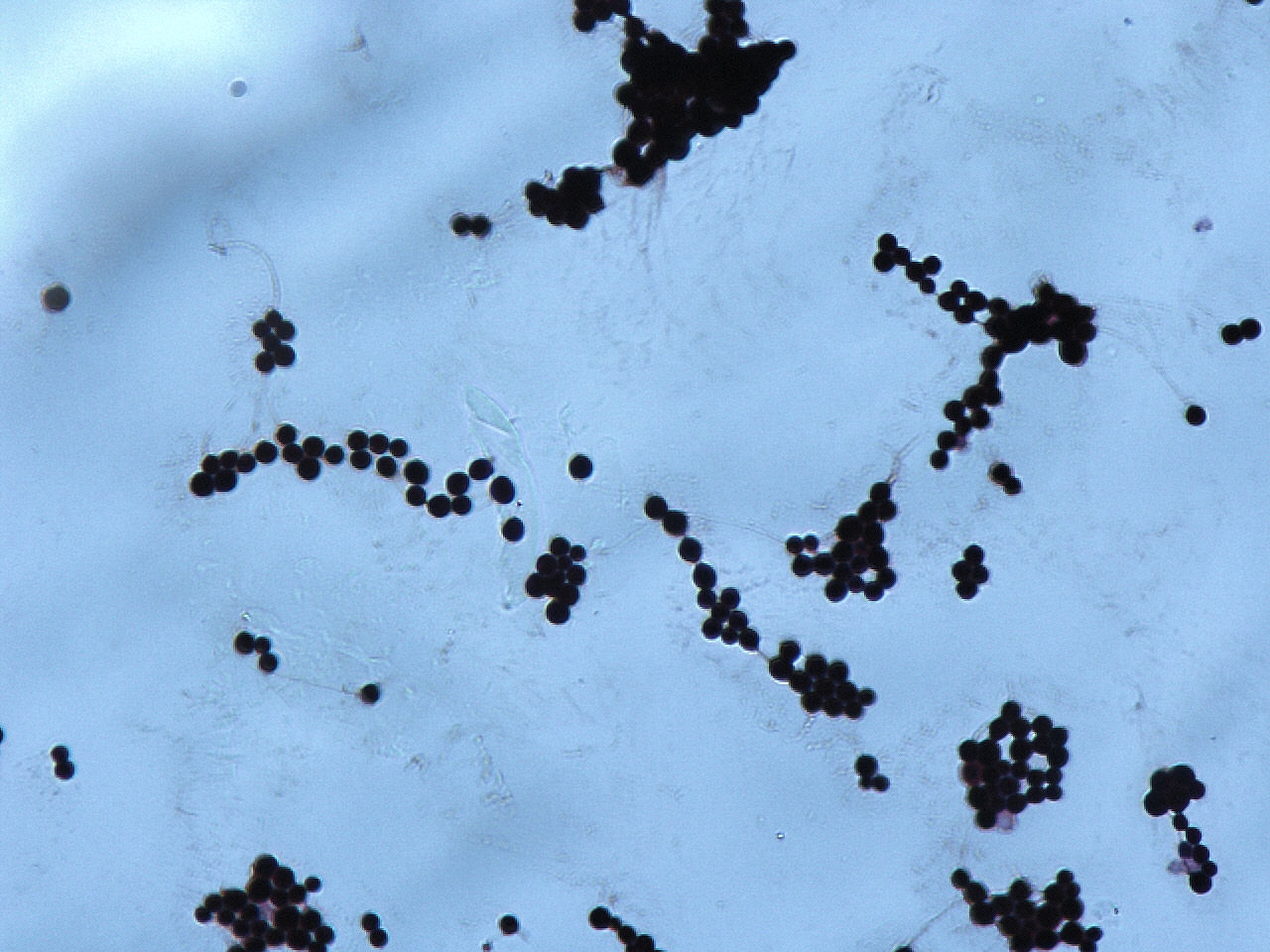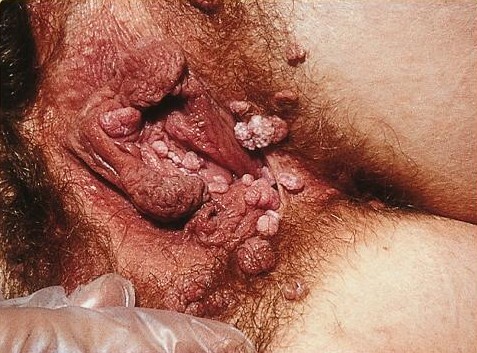|
Buschke
Abraham Buschke (27 September 1868 – 25 February 1943) was a Jewish Germans, German dermatologist who was a native of Nakel in the Province of Posen. Life In 1891 he received his doctorate in Berlin, and afterwards was a surgery, surgical assistant in Greifswald. Later he worked at dermatological clinics in Breslau under Albert Neisser (1855–1916) and in Berlin with Edmund Lesser (1852–1918). In 1906 he became head of dermatology at Rudolf Virchow Hospital in Wedding (Berlin), Wedding. In 1943 he died in the Nazi concentration camp at Theresienstadt, Bohemia. Work Abraham Buschke specialized in research of venereal disease. In 1926 with Martin Gumpert (1897–1955) he published a treatise on syphilis in children titled ''Geschlechtskrankheiten bei Kindern'' (Venereal Diseases in Children). His name is associated with several eponymous dermatological disorders, including: * scleredema, Buschke's scleredema: Hardening and thickening of the skin, usually on the upper back, ne ... [...More Info...] [...Related Items...] OR: [Wikipedia] [Google] [Baidu] |
Buschke–Ollendorff Syndrome
Buschke–Ollendorff syndrome (BOS) is a rare genodermatosis, genetic skin disorder associated with LEMD3 that typically presents with widespread painless papules. It is inherited in an autosome, autosomal Dominance relationship#Dominant allele, dominant manner. Conditions that may appear similar include tuberous sclerosis, pseudoxanthoma elasticum, neurofibroma, and lipoma, among others. Its frequency is almost 1 case per every 20,000 people, and it is equally found in both males and females. It is named for Abraham Buschke and Helene Ollendorff Curth, who described the condition in one female in 1928. Signs and symptoms The signs and symptoms of this condition are consistent with the following (possible complications include aortic stenosis and hearing loss): :::::::*Osteopoikilosis :::::::*Bone pain :::::::*Connective tissue nevi :::::::*Metaphysis abnormality Pathogenesis Buschke–Ollendorff syndrome is caused by one important factor: mutations in the LEMD3 gene. Among ... [...More Info...] [...Related Items...] OR: [Wikipedia] [Google] [Baidu] |
Buschke
Abraham Buschke (27 September 1868 – 25 February 1943) was a Jewish Germans, German dermatologist who was a native of Nakel in the Province of Posen. Life In 1891 he received his doctorate in Berlin, and afterwards was a surgery, surgical assistant in Greifswald. Later he worked at dermatological clinics in Breslau under Albert Neisser (1855–1916) and in Berlin with Edmund Lesser (1852–1918). In 1906 he became head of dermatology at Rudolf Virchow Hospital in Wedding (Berlin), Wedding. In 1943 he died in the Nazi concentration camp at Theresienstadt, Bohemia. Work Abraham Buschke specialized in research of venereal disease. In 1926 with Martin Gumpert (1897–1955) he published a treatise on syphilis in children titled ''Geschlechtskrankheiten bei Kindern'' (Venereal Diseases in Children). His name is associated with several eponymous dermatological disorders, including: * scleredema, Buschke's scleredema: Hardening and thickening of the skin, usually on the upper back, ne ... [...More Info...] [...Related Items...] OR: [Wikipedia] [Google] [Baidu] |
Helene Ollendorff Curth
Helene Ollendorff Curth (28 February 1899 – 17 June 1982) was a German-American dermatologist, known for her studies on acanthosis nigricans (AN) and introducing Curth's criteria, a set of characteristics for associating skin signs as markers for internal cancers. She is named in two rare inherited skin diseases, the Buschke–Ollendorff syndrome and Ichthyosis Hystrix, Curth-Macklin Type. A medical sign in secondary syphilis, known as the Ollendorff sign, and one form of measuring clubbed fingers, known as the Curth's angle, are named after her. Ollendorff Curth completed her early training under Josef Jadassohn at the University of Breslau. She moved to Berlin in 1924 and was appointed assistant to Abraham Buschke. In 1931 she settled in New York where she established a dermatology practice with her husband and became associated with Columbia University. During her career in the US, she published the first description of cases of Behçet's disease there, introduced patc ... [...More Info...] [...Related Items...] OR: [Wikipedia] [Google] [Baidu] |
Scleredema
Scleredema is a rare, self-limiting skin condition defined by progressive thickening and hardening of the skin, usually on the areas of the upper back, neck, shoulders and face. The skin may also change color to red or orange. The disease was discovered by Abraham Buschke. Although the cause of scleredema is unknown, it is usually associated with a disease, usually diabetes, a viral illness or strep throat. It is usually not fatal, but it may cause death if the disease spreads to the internal organs. It may also cause an infection. Diagnosis The scleredema is usually proposed as a diagnosis based on the appearance of the skin and the patient's medical history. To confirm the diagnosis, the doctor performs a skin biopsy, in which hematoxylin and eosin staining will show a thick reticular dermis with thick collagen bundles separated by clear spaces. The patient's blood may be examined for diseases that may appear after the onset of symptoms, such as multiple myeloma. Treatment ... [...More Info...] [...Related Items...] OR: [Wikipedia] [Google] [Baidu] |
Otto Busse
Otto Emil Franz Ulrich Busse (; 6 December 1867 – 3 February 1922) was a German pathologist. Busse was born in Gühlitz, Kingdom of Prussia. He studied medicine at the University of Greifswald, and subsequently became an assistant to Paul Grawitz (1850–1932), (his future father-in-law) at Greifswald. Afterwards he moved to Posen (today Poznań, Poland), where in 1904 he became a professor of pathology. From 1911 until 1922 he was professor of pathological anatomy at the University of Zurich, where he died. In 1894 Busse was the first to provide a written account of cryptococcosis, caused by a yeast-like fungus now known as ''Cryptococcus neoformans''. This he discovered in a patient with chronic periostitis of the tibia. At the time he called the fungus ''Saccharomyces hominis''. During the same time period, Francesco Sanfelice cultured the yeast-like fungus from peach juice, naming the fungus ''Saccharomyces neoformans''. [...More Info...] [...Related Items...] OR: [Wikipedia] [Google] [Baidu] |
Martin Gumpert
Martin Gumpert (13 November 1897 – 18 April 1955) was a German-born physician, dermatologist, medical historian, and author. Born in Berlin to a family of doctors, Gumpert pursued a medical career, specializing in dermatology and medical history. His early life was marked by service as a medical orderly during World War I and academic pursuits in Berlin and Heidelberg, culminating in a dissertation on syphilis in 1923. A left-wing social activist and trade unionist, Gumpert also engaged in expressionist poetry and literature. Early life Gumpert was born on 13 November 1897 in Berlin to his parents Ely, a doctor, and Elise. In 1923 he married Charlotte Blaschko, also a doctor, who died of tuberculosis in 1933. The couple had a daughter, Nina, who was born in around 1927. Gumpert trained as a doctor in Berlin and Heidelberg, working as a medical orderly during the First World War. His 1923 dissertation was on the history of syphilis, and he went on to write texts on pediatrics a ... [...More Info...] [...Related Items...] OR: [Wikipedia] [Google] [Baidu] |
German Dermatologists
German(s) may refer to: * Germany, the country of the Germans and German things **Germania (Roman era) * Germans, citizens of Germany, people of German ancestry, or native speakers of the German language ** For citizenship in Germany, see also German nationality law **Germanic peoples (Roman era) *German diaspora * German language * German cuisine, traditional foods of Germany People * German (given name) * German (surname) * Germán, a Spanish name Places * German (parish), Isle of Man * German, Albania, or Gërmej * German, Bulgaria * German, Iran * German, North Macedonia * German, New York, U.S. * Agios Germanos, Greece Other uses * German (mythology), a South Slavic mythological being * Germans (band), a Canadian rock band * "German" (song), a 2019 song by No Money Enterprise * ''The German'', a 2008 short film * "The Germans", an episode of ''Fawlty Towers'' * ''The German'', a nickname for Congolese rebel André Kisase Ngandu See also * Germanic (disambiguat ... [...More Info...] [...Related Items...] OR: [Wikipedia] [Google] [Baidu] |
Who Named It
''Whonamedit?'' is an online English-language dictionary of medical eponyms and the people associated with their identification. Though it is a dictionary, many eponyms and persons are presented in extensive articles with comprehensive bibliographies. The dictionary is hosted in Norway Norway, officially the Kingdom of Norway, is a Nordic countries, Nordic country located on the Scandinavian Peninsula in Northern Europe. The remote Arctic island of Jan Mayen and the archipelago of Svalbard also form part of the Kingdom of ... and was developed by medical historian Ole Daniel Enersen. References External links * Medical websites Medical dictionaries Eponyms in medicine {{online-dict-stub ... [...More Info...] [...Related Items...] OR: [Wikipedia] [Google] [Baidu] |
Cryptococcus Neoformans
''Cryptococcus neoformans'' is an encapsulated basidiomycetous yeast belonging to the class Tremellomycetes and an obligate aerobe that can live in both plants and animals. Its teleomorph is a filamentous fungus, formerly referred to ''Filobasidiella neoformans''. In its yeast state, it is often found in bird excrement. It has remarkable genomic plasticity and genetic variability between its strains, making treatment of the disease it causes difficult. ''Cryptococcus neoformans'' causes disease primarily in immunocompromised hosts, such as HIV or cancer patients. In addition it has been shown to cause disease in apparently immunocompetent hosts, especially in developed countries. Classification ''Cryptococcus neoformans'' has undergone numerous nomenclature revisions since its first description in 1895. It formerly contained two varieties: ''C. neoformans ''var.'' neoformans'' and ''C. neoformans '' var.'' grubii''. A third variety, ''C. neoformans ''var.'' gattii'', was la ... [...More Info...] [...Related Items...] OR: [Wikipedia] [Google] [Baidu] |
Fungus
A fungus (: fungi , , , or ; or funguses) is any member of the group of eukaryotic organisms that includes microorganisms such as yeasts and mold (fungus), molds, as well as the more familiar mushrooms. These organisms are classified as one of the kingdom (biology)#Six kingdoms (1998), traditional eukaryotic kingdoms, along with Animalia, Plantae, and either Protista or Protozoa and Chromista. A characteristic that places fungi in a different kingdom from plants, bacteria, and some protists is chitin in their cell walls. Fungi, like animals, are heterotrophs; they acquire their food by absorbing dissolved molecules, typically by secreting digestive enzymes into their environment. Fungi do not photosynthesize. Growth is their means of motility, mobility, except for spores (a few of which are flagellated), which may travel through the air or water. Fungi are the principal decomposers in ecological systems. These and other differences place fungi in a single group of related o ... [...More Info...] [...Related Items...] OR: [Wikipedia] [Google] [Baidu] |
Pathologist
Pathology is the study of disease. The word ''pathology'' also refers to the study of disease in general, incorporating a wide range of biology research fields and medical practices. However, when used in the context of modern medical treatment, the term is often used in a narrower fashion to refer to processes and tests that fall within the contemporary medical field of "general pathology", an area that includes a number of distinct but inter-related medical specialties that diagnose disease, mostly through analysis of tissue and human cell samples. Idiomatically, "a pathology" may also refer to the predicted or actual progression of particular diseases (as in the statement "the many different forms of cancer have diverse pathologies", in which case a more proper choice of word would be " pathophysiologies"). The suffix ''pathy'' is sometimes used to indicate a state of disease in cases of both physical ailment (as in cardiomyopathy) and psychological conditions (such as ps ... [...More Info...] [...Related Items...] OR: [Wikipedia] [Google] [Baidu] |
Genital Wart
Genital warts are a sexually transmitted infection caused by certain types of human papillomavirus (HPV). They may be flat or project out from the surface of the skin, and their color may vary; brownish, white, pale yellow, pinkish-red, or gray. There may be a few individual warts or several, either in a cluster or merged together to look cauliflower-shaped. They can be itchy and feel burning. Usually they cause few symptoms, but can occasionally be painful. Typically they appear one to eight months following exposure. Warts are the most easily recognized symptom of genital HPV infection. HPV types 6 and 11 are responsible for causing majority of genital warts whereas HPV types 16, 18, 31, 33, and 35 are also occasionally found. It is spread through direct skin-to-skin contact, usually during oral, manual, vaginal, or anal sex with an infected partner. Diagnosis is generally based on symptoms and can be confirmed by biopsy. The types of HPV that cause cancer are not the same a ... [...More Info...] [...Related Items...] OR: [Wikipedia] [Google] [Baidu] |




